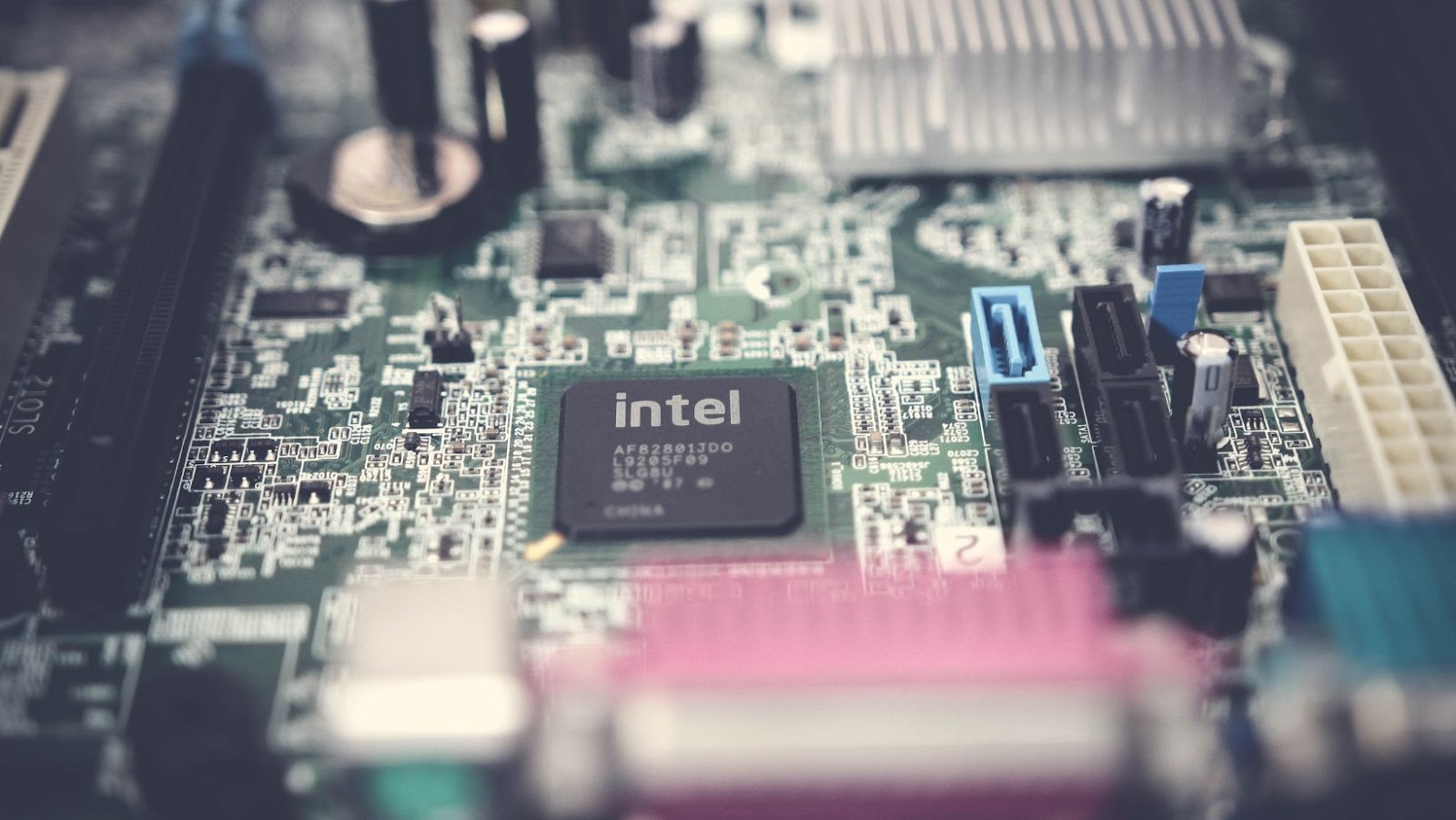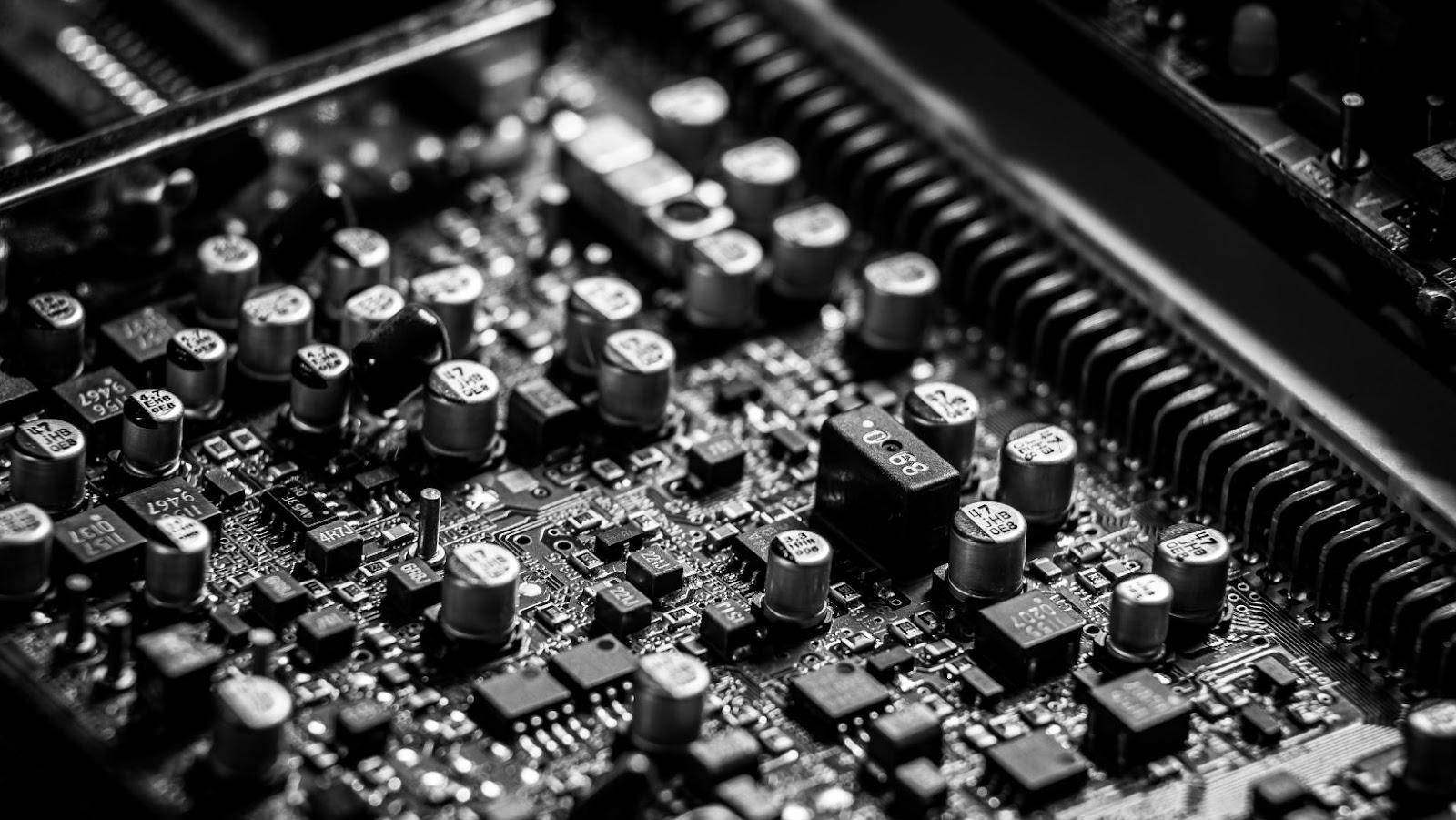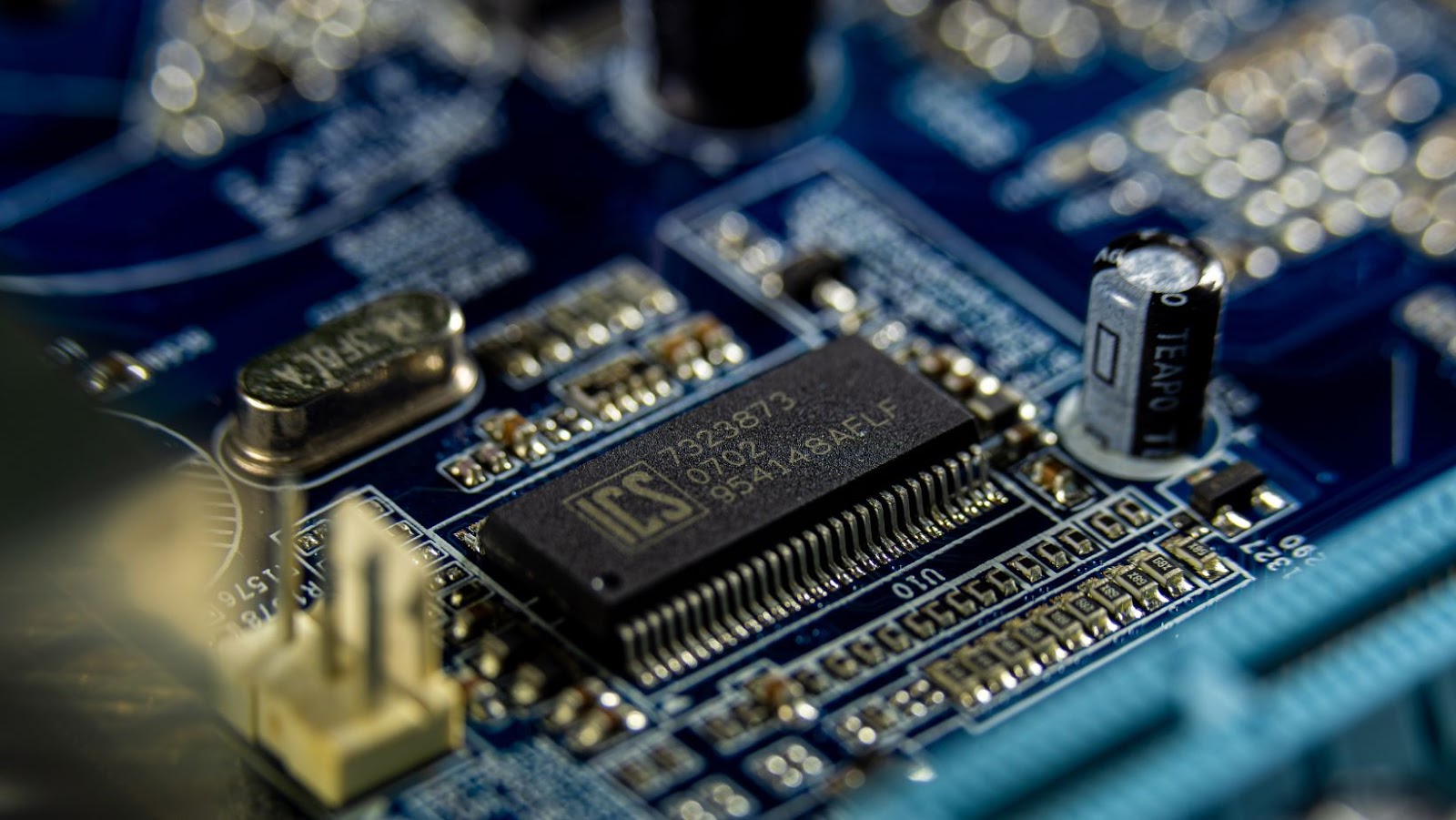Intel Corporation is the largest semiconductor company in the world and has long been known for its powerful, reliable processors. However, over the past few years, Intel’s dominance in the chip market has come under threat from rivals Samsung and TSMC. While Intel still commands a majority of the market share, its competitors are gaining ground quickly as they build faster, more efficient chips.
To respond to this competitive challenge, Intel is creating a strategy to regain its leadership position in the industry by narrowing the gap between itself and its competitors with new technology and partnerships. In this article we will take a closer look at how Intel plans to catch up with Samsung and TSMC and reassert itself as an innovator in the chip market.
Intel’s Current Position
Intel is a leader in the semiconductor industry and its products can be found in many technological devices. However, in recent years, Intel has been losing market share to competitors such as Samsung and TSMC.
In order to regain its dominance in the chip market, Intel is making strategic moves to differentiate itself from its competitors. In this article, we’ll discuss Intel’s current position in the chip market and how it is attempting to catch up with its rivals.
Market Share
Intel, the world’s largest producer of production CPU and server chips, has lost market share in recent years to Samsung and TSMC. With the advent of 5G technology, the competition is only getting stiffer. Intel is scrambling to catch up before it falls further behind, and it has an ambitious plan for doing so.
The company initially attempted to find ways to reduce production costs by modernizing its factories and improving its process technologies. This was a good first step, but it didn’t put Intel in a position from which it could effectively compete with Samsung and TSMC. Intel then decided that the solution was to invest heavily in order to achieve structural transformation of their business.

To accomplish this task, Intel acquired companies such as Altera and Moovit as part of a larger strategy to build up their arsenal of intellectual property (IP). It also increased investments into developing new technology such as high-speed interconnects, 3D packaging solutions, advanced chip materials and improved manufacturing processes which would allow it to better compete with existing industry leaders like Samsung and TSMC. In addition, they have invested heavily in emerging technologies such as artificial intelligence (AI) and quantum computing which are likely to become key components of future chip designs.
These efforts are beginning to pay off as Intel recently reported successful test results on their new 7-nanometer process technology which promises better performance than previous generations while consuming less power. This should allow Intel to gain back some lost market share from Samsung and TSMC for both consumer chips as well as data center processor chips essential for cloud computing applications going forward.
Challenges Facing Intel
The challenges facing Intel are significantly intense in terms of competition, and the company has varying levels of exposure to the fast-paced changes transforming the chip market. The most immediate challenge facing Intel is competitors who can switch to newer technologies faster. This can allow them to reduce their product lifecycles and develop chips quicker than Intel, giving them an advantage in the market. As a result, Intel must be able to keep up with their competition in order to remain competitive.
Furthermore, Intel lacks a strong presence in mobile device chipsets as compared to other types of computing or CPU processing chipsets. This has exposed them further and put pressure on their public image presenting challenges with brand identity and public opinion. Additionally, complex processes like lithography transitions are much harder for Intel due to its large size and somewhat slower development cycles which have resulted in under-budgeting for specific products causing major delays or shipments not arriving on time which consequently impacts customer experience satisfaction.
Finally, falling behind Samsung and TSMC (Taiwan Semiconductor Manufacturing Company) have left a gap that needs be filled by some aggressive tactics from Intel if they are indeed looking for regaining its dominance over the chip market again. Therefore, it is important for Intel to construct innovative plans that could potentially help them catch up with competitors as well as identify potential areas of opportunity such as artificial intelligence (AI) market that is expected to expand greatly over time – all in order to remain relevant by continuing its legacy since 1965 as one of the most technologically advanced semiconductor(s) companies till this day.
Intel’s Strategic Plans
Intel has announced a number of strategic plans to regain its leadership in the chip-making industry. This includes investing in newer technologies, increased partnership with other tech companies, and focusing on custom processors for specific customer needs. In order to catch up with Samsung and TSMC, Intel must also focus on building a larger manufacturing capacity, which will require significant investments.
Let’s take a closer look at Intel’s plans to regain its market dominance.
Investing in Advanced Technologies
Intel is investing heavily in advanced technologies such as 5nm and 3D transistors, photolithography enhancements and chip packaging innovations. The company believes these efforts will help it to catch up to the leading players in the chip market, Samsung and TSMC.
The company has plans to develop a line of chips using 5 nanometer production for high end smartphone and laptop components. At this size, transistors are able to move faster and use less power than with current technology at 10 nanometers. It also has plans to improve its photolithography technology with extreme ultraviolet (EUV) lithography that allows for smaller designs on larger wafers which are more efficient for manufacturing leading to cost savings. Further packaging improvements are aimed at bringing more performance capabilities into fanless designs making them suitable for devices like laptops, tablets, mobiles and more that need higher levels of efficiency.
Intel is looking to specific design changes such as moving from 2D-focused designs to ones with multi-level stacking of logic layers that can provide higher density while still enabling faster speeds than current chips support. It is also incorporating AI technologies into its roadmap along with silicon photonics which enables faster data pathways compared with traditional electrical pathways that current computer chips use today.
Increasing Manufacturing Capacity
Intel’s strategy to regain its dominance in the chip market involves both short-term and long-term solutions. In the short-term, Intel is increasing its manufacturing capacity through a major investment in next generation technology and manufacturing processes. Intel announced a $20 billion capital expenditure plan to ramp up production of its next generation 7 nanometer (nm) process by 2022. This investment is a critical step for Intel to accelerate the development of their new CPU technology, producing more advanced processors with lower power consumption and higher performance at smaller sizes than ever before.

The company also plans to double their existing capacity by investing in additional lithography equipment and expanding manufacturing sites around the globe. To help keep costs down and maximize efficiency, they’ve invested in an EUV (extreme ultra-violet) lithography system which can produce chips faster and with lower defects than traditional methods. With these investments, Intel expects to have adequate capacity by 2023 to meet customer demands for their 7nm technology as well as capture new business from customers who are currently using Samsung or TSMC’s foundries for chip production.
Acquiring New Companies
In order to quickly regain its market share, Intel has been pursuing an aggressive acquisition strategy. Intel has acquired strong companies such as Habana Labs and Altera in the past few years, and is currently in the final stages of acquiring Omnitec Solutions. These acquisitions are made with a view to integrating their expertise in areas such as artificial intelligence (AI), machine learning and deep learning into Intel’s own technology. Through these strategies, Intel hopes to gain an edge over Samsung and TSMC and become a major player in the chip manufacturing industry once more.
Intel also plans to strengthen its semiconductor chip portfolio by making strategic investments into other technology companies that have standout products which can be used for AI application/machine learning tasks, like Movidius or Nervana. These types of companies have access to various forms of intellectual property that might provide Intellectual Property (IP) benefits for Intel, enabling them to keep up with Samsung and TSMC without having to invent the technology themselves from scratch.
Alongside the above mentioned strategies, Intel is also looking at increasing its edge against other competitors through partnerships or outright buying out other companies that specialize in manufacturing specific types of chips like graphics processing units (GPUs), field programmable gate arrays (FPGAs) or embedded multi-core processors (eMCPs). This could give them a widening product portfolio which gives more services than what other competitors are able to offer at present.
How Intel plans to catch Samsung and TSMC and regain its dominance in the chip market
Intel is pushing to reclaim its market share by introducing new technologies and investing heavily to become more competitive against its biggest rival, Samsung and TSMC.
Intel faces the challenge of catching up to the other chip makers and needs to innovate in order to remain a top player in the market.
This article will examine Intel’s strategies for regaining dominance in the chip market and competing with Samsung and TSMC.
Increasing Investment in Foundries
Intel is increasing investment in their foundries to catch up with the competition, namely leading players Samsung and TSMC. This includes a planned $20 billion cash injection into their existing factories in the US, Israel, and Ireland. These plans will give Intel’s manufacturing businesses a much needed boost and allow them to produce more advanced chips without depending on outside suppliers.
In addition to increased investment into their own factories, Intel is looking to expand its portfolio of technology partners that are providing the needed IP for their advanced chips. They are working with major players such as TSMC and Samsung as well as new providers including GlobalFoundries, UMC and SMIC. By diversifying its technology partners, Intel can speed up the process of catching up with established rivals like Samsung and TSMC while remaining competitive in terms of pricing and performance of high-end chips. Furthermore, they can gain access to new markets through these partnerships by leveraging different business models such as turnkey manufacturing or multi-node production lines.
Finally, Intel is also investing heavily in research & development (R&D) projects that will help achieve technical milestones necessary for catching up with competitors’ chip technology. This includes expanding its design teams across several locations around the world to write complex code quickly while decreasing costs associated with those efforts. By pursuing these R&D initiatives while investing into foundry expansions and partnerships, Intel is confident it can regain its lost market share from Samsung and TSMC in the near future.
Developing New Processes and Technologies
In order to regain its rightful place atop the semiconductor market, Intel is investing heavily in developing new chip manufacturing processes and technologies. Intel will double down on their 10-nanometer architecture, continuing efforts to improve its transistor density and thus reduce power consumption and increase performance.

At the same time, Intel is now looking to enhance its process technology with a focus on addressing cost concerns by quickly introducing advanced packaging techniques like Foveros 3D stacking and EMIB (Embedded Multi-die Interconnect Bridge). Foveros packages multiple layers of logic transistors in one device, allowing for more efficient use of space within the form factor. While EMIB also utilizes multiple layers of transistors but allows for better interconnectivity between different chip parts like processor cores and accelerators such as Graphical Processing Units (GPUs).
For memories, Intel has partnered with Micron Technologies Inc., an American memory manufacturer, to develop the ‘Intel Optane’ solid state drives — an alternative storage solution that will offer higher performance than today’s current DRAM chips at a competitive price point. Furthermore, it has been reported that Intel is also exploring further application specific integrated circuit (ASIC) development for AI purposes.
Aside from advancements in process technology Intel has also been making effort towards increasing research activities related to materials science — ultimately leading towards enhanced chip reliability and performance at a reduced cost of production. Arguably one of Intel’s biggest liabilities over the past few years when compared to Samsung or TSMC has been their inability to keep up with Moore’s Law. But if intel continues down this path with diligence I see no reason as to why it can’t regain dominance once again in this industry.
Investing in AI and Machine Learning
Intel is investing heavily in Artificial Intelligence (AI) and Machine Learning as part of its efforts to compete with Samsung and TSMC. Intel has announced a series of strategic acquisitions that will give it access to cutting-edge technologies focused on AI, such as Habana Labs, Nervana Systems, MobileEye, and FPGA technology from Altera. The chipmaker is also improving its existing data center processor capabilities through such investments as Avidsys, Skylake Processor Testing Technology, a partnership with Facebook in developing the new Neuromorphic Machine Learning Platform Intel Nervana, and more.
In addition to these investments in AI technology, Intel is also investing heavily in the process of manufacturing chips themselves. The mega chip maker is ramping up its spending on equipment and processes that allow it to retain a competitive edge over Samsung and TSMC. This includes an ambitious 10nm production ramp-up program that results not only in higher performance chips but also increased efficiency when compared to its competitors’ 14nm chips. Furthermore, the company has invested heavily in developing advanced packaging solutions for heterogeneous computing such as 2D/3D Stacking solutions for memory I/Os alongside higher bandwidth memory types like HBM2E and GDDR6 which would outcompete their counterparts from Samsung and TSMC.
All these investments point towards Intel’s commitment to remaining at the forefront of chip manufacturing despite the ongoing competition from both Samsung and TSMC which are financially better off than Intel at the moment. In order to regain its dominance in the chip market Intel intends to invest further into developing both technologies used for making processors as well as functionalities available on them such as AI & Machine Learning while maintaining higher quality levels than their current competitors have reached thus far.
